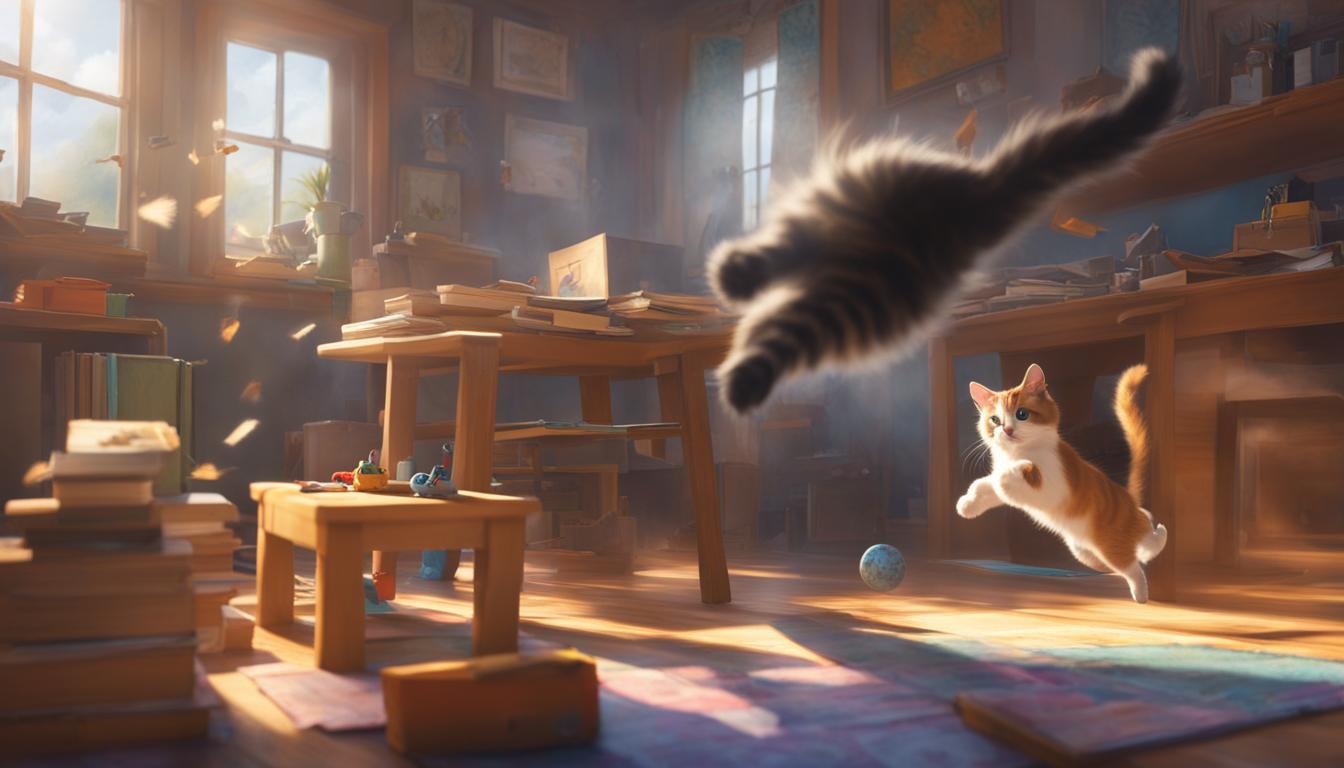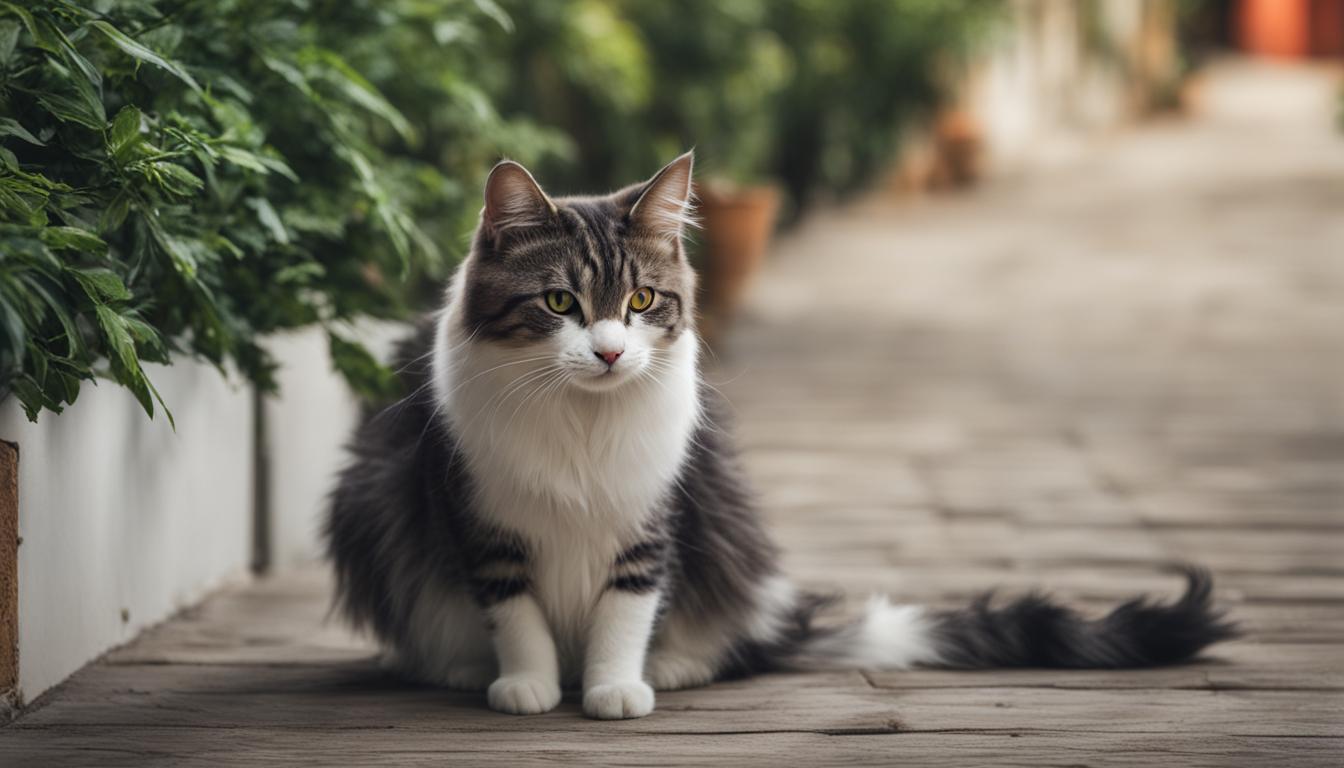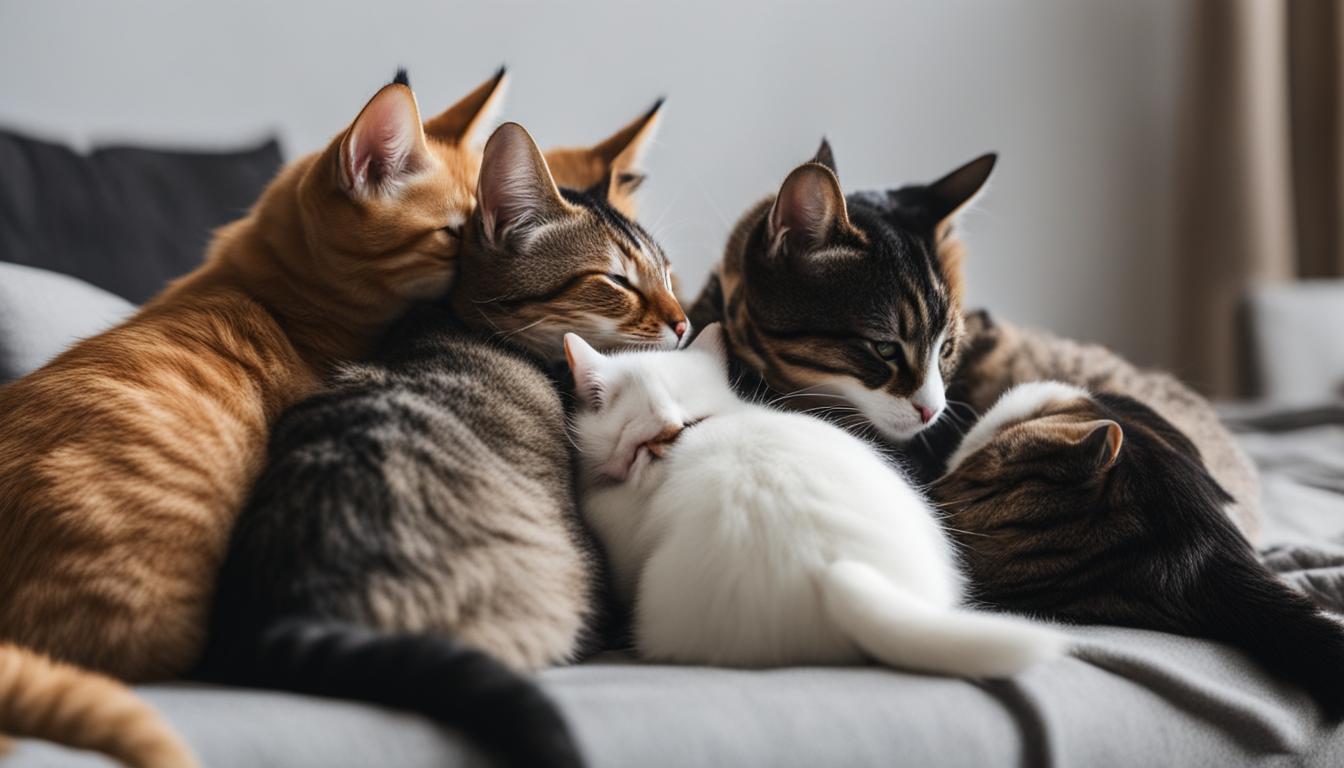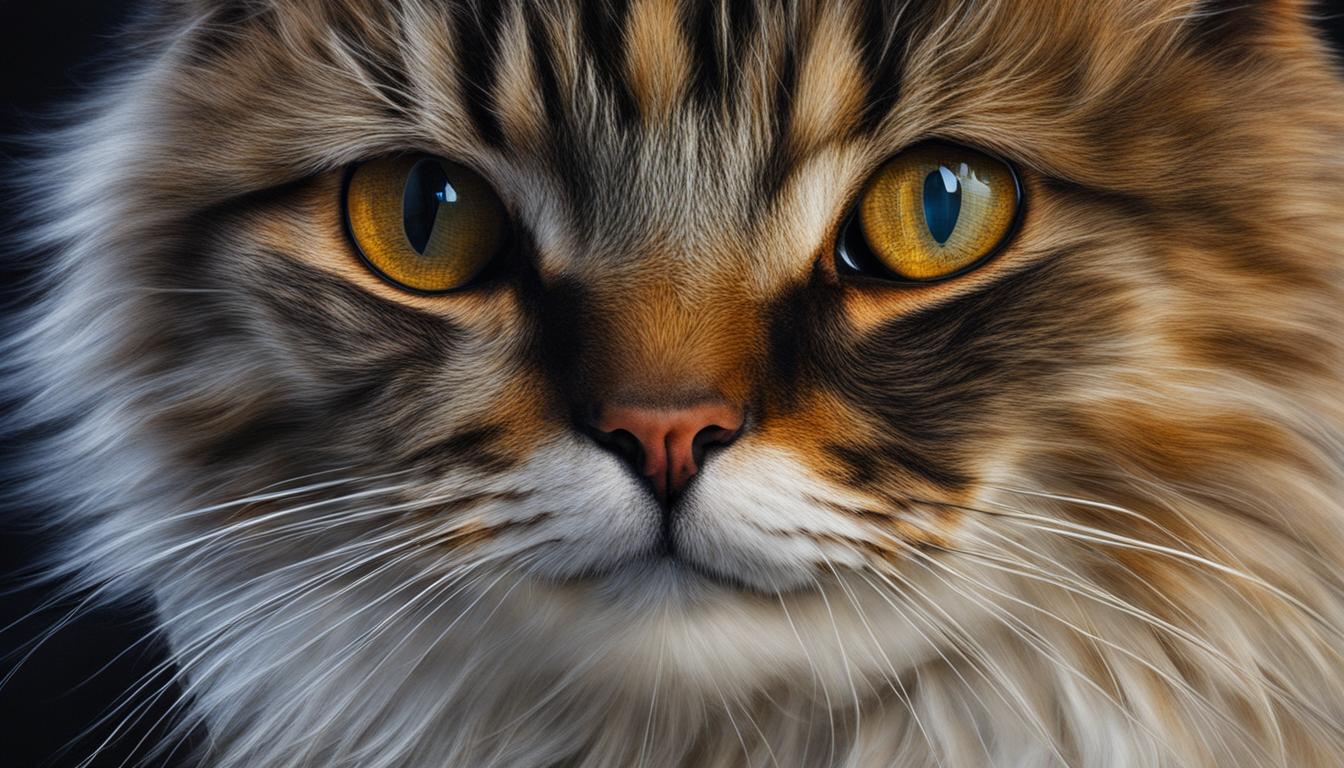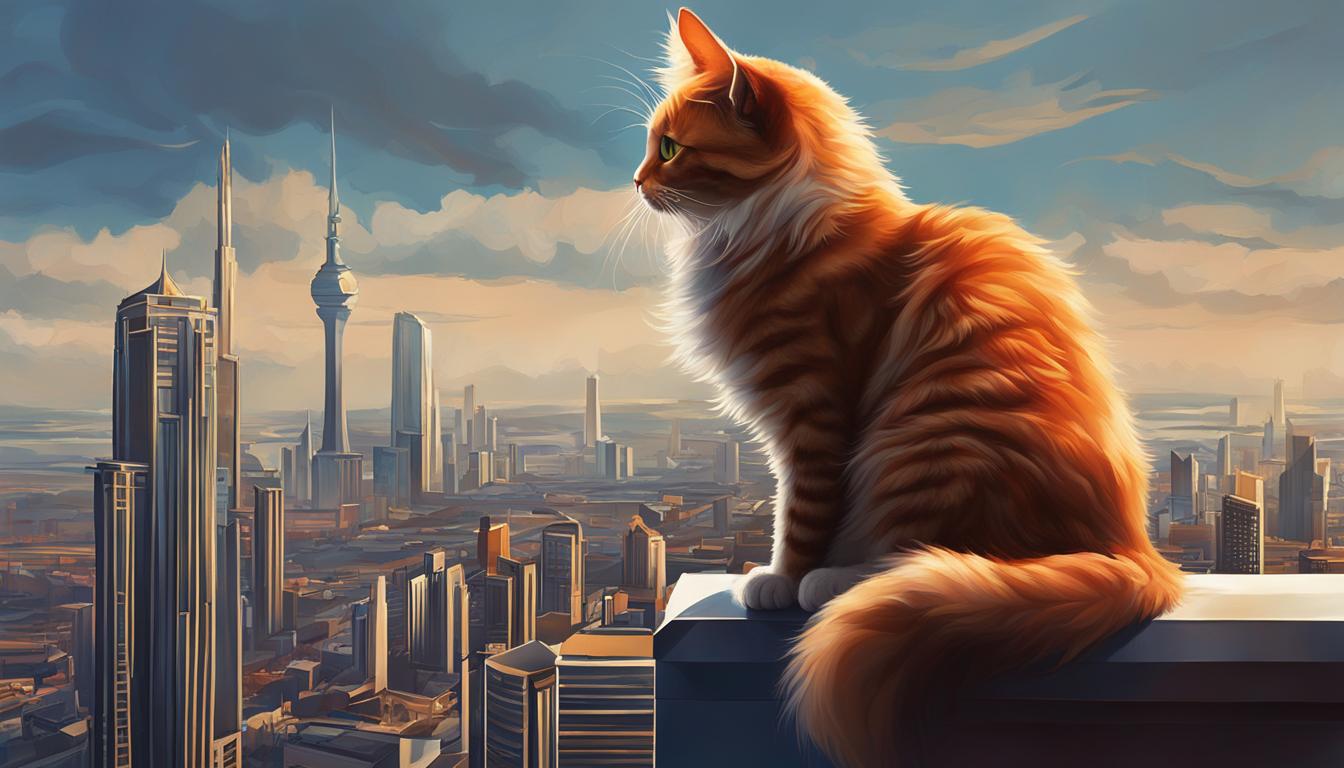Understanding our feline friends can sometimes feel like deciphering an ancient secret code. One moment they’re peacefully napping on the windowsill, and the next, they’re tearing through the house like a tiny tornado. If you’ve ever witnessed this phenomenon, you’ve experienced cat zoomies – those sudden bursts of energy that seem to come out of nowhere.
But what causes these frenzied episodes? And how can we manage our cats’ sudden energy bursts? Join me as I unravel the science behind cat zoomies and provide you with valuable insights into understanding and dealing with this quirky behavior.
Key Takeaways:
- Cat zoomies, or frenetic random activity periods (FRAPs), are sudden bursts of intense energy that cats experience.
- There are various reasons why cats get the zoomies, including sleep alterations, medical conditions, and environmental triggers.
- Managing cat zoomies involves creating a safe space for your cat, providing ample exercise and mental stimulation, and seeking veterinary advice if necessary.
- Zooming behavior is a natural expression of a cat’s energy and happiness, but sudden or abnormal changes may require further investigation.
- By understanding the causes and managing cat zoomies, pet parents can ensure their feline companions are happy and healthy.
Understanding the Reasons Behind Cat Zoomies
Cat zoomies, also known as frenetic random activity periods (FRAPs), can be triggered by various environmental factors. Understanding these triggers can help pet parents manage their cats’ zoomies and ensure their feline friends remain happy and healthy.
One common reason for cat zoomies is pent-up energy. Cats are natural hunters and need physical activity to expend their energy. Without enough exercise and stimulation, cats can become restless and resort to zooming around the house. Providing regular play sessions and interactive toys can help minimize the occurrence of zoomies by allowing cats to release their energy in a controlled and healthy way.
Stress relief is another factor that can contribute to cat zoomies. Cats are sensitive creatures, and certain situations or changes in their environment can cause stress or anxiety. Zooming can be a way for cats to relieve tension and express their emotions. By identifying and addressing these stress triggers, such as loud noises, unfamiliar visitors, or changes in routine, pet parents can help reduce the frequency of zoomies and promote a more relaxed environment for their cats.
“Zooming can be a way for cats to relieve tension and express their emotions.”
It’s also important to consider the health implications of cat zoomies. While zooming behavior is usually harmless, excessive or prolonged zoomies could be a sign of underlying health issues. Cats with arthritic pain, flea and tick bites, kidney and liver disease, toxins, brain tumors, hyperthyroidism, or diabetes may experience increased zooming behavior. If zoomies become more frequent or intense, it’s advisable to consult a veterinarian to rule out any potential health problems.
In conclusion, understanding the reasons behind cat zoomies is crucial for managing this behavior and ensuring the well-being of our feline companions. By addressing environmental triggers, providing adequate exercise, and monitoring for any health concerns, pet parents can help their cats enjoy their zoomies while keeping them safe and healthy.

Managing Cat Zoomies
Cat zoomies can be entertaining to watch, but it’s important to manage these sudden bursts of energy to prevent any injuries or damage. One of the ways to manage cat zoomies is by creating a safe space for your cat. Remove breakable items and obstructions from the area where your cat typically zooms. If the flooring is slippery, direct your cat to a carpeted room to avoid any accidents. Providing a safe environment can help prevent any mishaps during zoomie episodes.
Regular exercise is crucial for managing cat zoomies. By ensuring that your cat gets enough physical activity during the day, you can help prevent excessive energy buildup. Engaging in interactive play sessions with your cat, using toys that dispense treats, and providing opportunities for climbing and exploring can all help burn off your cat’s excess energy. Additionally, consider using calming products such as pheromone sprays or collars to help reduce stress and anxiety, which can contribute to zoomie behavior.
It’s important to note that cat zoomies are more common at night. To help prevent nighttime zoomies, try engaging your cat in play and exercise during the evening hours. This can include using toys that mimic prey, such as feather wands or laser pointers, to stimulate your cat’s natural hunting instincts. Providing mental stimulation through puzzle toys or hiding treats around the house can also help keep your cat mentally engaged and reduce the likelihood of zoomie episodes.
| Managing Cat Zoomies | Preventing Cat Zoomies |
|---|---|
| 1. Create a safe space for your cat by removing breakable items and obstructions from the area where your cat typically zooms. | 1. Engage in regular play and exercise sessions with your cat to burn off excess energy. |
| 2. Direct your cat to a carpeted room if the flooring is slippery, to prevent any accidents during zoomie episodes. | 2. Use interactive toys that dispense treats to keep your cat mentally and physically stimulated. |
| 3. Consider using calming products like pheromone sprays or collars to reduce stress and anxiety, which can contribute to zoomie behavior. | 3. Provide mental stimulation through puzzle toys or hiding treats around the house. |
| 4. Engage your cat in play and exercise during the evening hours to help prevent nighttime zoomies. |
When to Seek Veterinary Advice
If you notice that your cat’s zoomie behavior suddenly increases in frequency or intensity, it may be a cause for concern. While zoomies are generally a natural behavior in most cats, changes in behavior can sometimes indicate underlying health issues. Hyperactivity in cats can be a sign of medical conditions such as hyperthyroidism or diabetes. It’s important to monitor your cat’s zoomie behavior and look out for any accompanying symptoms, such as vocalizing or weight loss.
If your cat has never had zoomies before and suddenly starts exhibiting this behavior, it’s essential to consider any recent changes in medication, diet, or treats. Certain ingredients in treats or medications can cause strange behaviors in cats. It’s always a good idea to consult with a veterinarian to rule out any underlying health issues or medication-related side effects.
Seeking veterinary advice is crucial to ensure the well-being and happiness of your cat. A veterinarian will be able to evaluate your cat’s overall health and provide appropriate guidance and treatment if necessary. Remember, it’s always better to be proactive and address any concerns or changes in behavior early on.
| Signs to Look Out For | Possible Causes |
|---|---|
| Increased zoomie behavior | Hyperthyroidism |
| Vocalizing during zoomies | Diabetes |
| Weight loss | Medication or diet changes |
Remember, as pet parents, it’s important to trust your instincts. If you’re concerned about your cat’s zoomie behavior or notice any abnormal changes, don’t hesitate to reach out to a veterinarian for professional advice and guidance. They will be able to provide the necessary support to ensure your cat’s health and well-being.

The Significance of Cat Zoomies in Feline Behavior
When a cat suddenly starts darting around the house, leaping off furniture, and generally exhibiting what appears to be spontaneous bursts of energy, it’s commonly referred to as “cat zoomies.” These episodes of frenetic activity, although seemingly random, serve an essential purpose in a cat’s behavior and well-being.
Cat zoomies are often associated with play and can be a sign of a happy and content feline. During these energetic episodes, cats engage in behaviors that mimic their natural hunting instincts, such as stalking, pouncing, and quick bursts of movement. Zooming around is not only a form of exercise for cats but also a way to release pent-up energy and stimulate their minds.
Play is an important aspect of a cat’s life, contributing to their physical and mental health. It helps them maintain a healthy weight, prevents boredom, and provides an outlet for their natural instincts. Cat zoomies are an expression of this innate behavior, allowing cats to explore their environment, burn off excess energy, and maintain their overall well-being.
“The zoomies are a delightful sight to behold, and they offer a glimpse into the playful nature of cats. It’s their way of showing us their happiness and expressing their natural instincts.”
As pet owners, it’s important to provide opportunities for play and physical activity to encourage a cat’s natural behavior, including zooming. Interactive toys, such as feather wands or laser pointers, can be great tools to engage your cat in play sessions. Creating an enriched environment with scratching posts, climbing structures, and puzzle toys can also help satisfy their need for mental stimulation.
Zooming vs. Agitation: Understanding the Difference
While cat zoomies are generally considered normal and harmless behavior, it’s essential to distinguish them from signs of agitation or distress. Cats experiencing zoomies will exhibit playful behavior, often with a relaxed body posture and a joyful expression. On the other hand, agitation or distress can involve aggressive or defensive behaviors, such as hissing, growling, or hiding.
If your cat’s zoomies seem excessive, last for extended periods, or are accompanied by signs of distress, it’s advisable to consult with a veterinarian. They can help rule out any underlying medical or behavioral issues that may be causing abnormal behavior.
The Joy of Cat Zoomies
Next time your feline friend starts zooming around the house, take a moment to appreciate the joy and excitement they are experiencing. Capture their playful moments with photographs or simply enjoy the spectacle of their enthusiastic bursts of energy. Remember, zoomies are a natural part of a cat’s behavior, and by supporting their playfulness, you’re helping them lead a happy and healthy life.
Conclusion
So there you have it, the mystery of cat zoomies unraveled! As a cat lover myself, understanding and managing these sudden bursts of energy in our feline friends is essential for their well-being. By providing regular exercise, mental stimulation, and a safe environment, we can help prevent excessive zooming behavior.
Remember, cat zoomies are a natural and healthy expression of a cat’s energy and happiness. It’s like watching them tap into their inner predator and unleash their excitement! But it’s equally important to be vigilant and seek veterinary advice if your cat’s zoomie behavior changes significantly or is accompanied by other concerning symptoms.
So, let’s continue to be the best pet parents we can be. Understanding hyperactivity in cats and managing cat zoomies is all part of the journey. With a little patience and a lot of love, we can ensure our feline companions lead happy, healthy, and zoomie-filled lives!
FAQ
What are cat zoomies?
Cat zoomies, also known as frenetic random activity periods (FRAPs), are sudden bursts of intense energy that cats experience.
When do cat zoomies usually occur?
Cat zoomies can occur at any time of day, but they are most common at night.
Why do cats get the zoomies?
Cats can get the zoomies due to various reasons, including pent-up energy, stressful triggers, or as a way to relieve discomfort.
How can I manage cat zoomies?
To manage cat zoomies, create a safe space, provide plenty of stimulation and exercise, and consider using calming products.
When should I seek veterinary advice for cat zoomies?
If a cat’s zoomie behavior increases in frequency or intensity, or is accompanied by other concerning symptoms, it’s recommended to consult a veterinarian.
Are cat zoomies a normal behavior?
Yes, cat zoomies are a natural behavior and allow cats to engage in their hunting instincts and express excitement.

